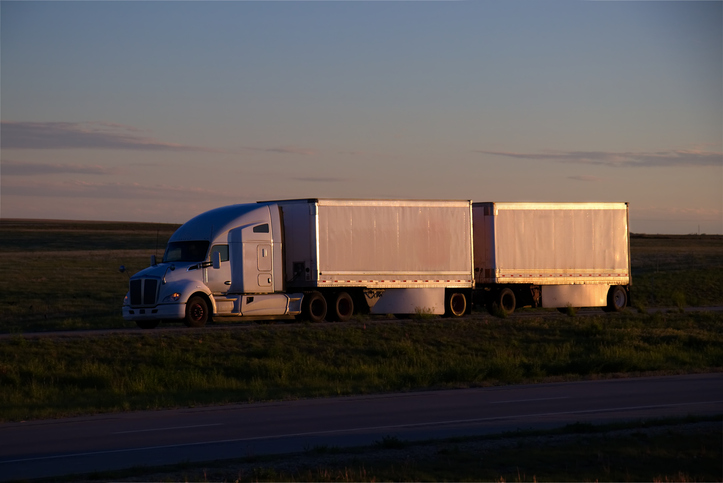Cost management is one of the biggest challenges business leaders face. Production and manufacturing costs determine supply chain and logistics business performance. Operation success depends on understanding these two cost categories and their differences. In this article, we will look at the differences between manufacturing costs and production costs. Many businesses struggle to define where one cost set ends and the next begins. Having a clear understanding of each set of costs will help you make better decisions about how to optimize your supply chain and improve business profits.
Difference Between Manufacturing and Production
Businesses need to be able to define their manufacturing costs from their production costs. Manufacturing costs are incurred as raw materials are turned into finished goods. These costs include materials, labor, and manufacturing overhead expenses. Production costs are incurred from the completion of manufacturing until the final delivery of the product to a customer. These costs include transportation, warehousing, and distribution costs.
Understanding Manufacturing Costs: A Detailed Overview
What are Manufacturing Costs?
Manufacturing costs are essential to the budgeting and production process, encompassing all expenses associated with creating a product. These costs are typically categorized into three main areas: materials, labor, and overhead.
Direct Materials
Direct materials include raw materials and components actively used in the manufacturing of a product. Common examples are metals like steel, plastic, fabrics used in textiles, and electronics components. These materials constitute a significant portion of the manufacturing budget due to their direct involvement in the product creation. The cost of direct materials not only reflects their market value but also encompasses additional expenses such as the purchase price, shipping, handling, and any other costs related to procurement and delivery.
Direct Labor
Direct labor costs encompass wages, salaries, and benefits awarded to employees who are directly involved in the manufacturing process. This group includes individuals who operate machinery, work on assembly lines, and perform quality control checks. The cost here is calculated based on the hours worked and the hourly wage rate, which can vary significantly depending on the level of skill required and the geographic location of the production facility. In the context of modern manufacturing, where automation plays an increasingly prominent role, direct labor costs are also influenced by the degree of technology adoption and the need for human oversight.
Manufacturing Overhead
Manufacturing overhead refers to all the indirect costs that are not directly accountable to materials or labor but are essential for the operation. This category includes expenses such as rent for the factory space, utilities, maintenance of equipment, and depreciation. Additionally, overhead may involve indirect labor costs like salaries for factory managers who do not directly participate in the product assembly. Manufacturing overhead is crucial for comprehensive pricing strategies and overall cost management, typically allocated to each unit produced based on a predetermined overhead rate.
By understanding these components—direct materials, direct labor, and manufacturing overhead—businesses can better manage their production costs, optimize pricing strategies, and enhance profitability. Each element plays a critical role in the financial structure of manufacturing and requires careful consideration and management.
What are Production Costs?
Production costs are the costs incurred as a product moves through the supply chain. These costs begin as soon as the manufacturing process is completed and continue until the final delivery of the product to the customer. Manufacturing costs are limited to product creation, whereas production costs include logistics and distribution.
Transportation
Transportation costs include the movement of finished goods from the factory to a distribution center. Associated costs like fuel, freight, and shipping fall into this expense category also.
Costs of Distribution
Distribution costs include inventory storage, handling, and management throughout the supply chain. This includes warehouse fees, inventory management systems, packaging materials, and other distribution network storage and shipping costs.
Other Related Activities
Aside from transportation and distribution costs, production costs can include a variety of other activities required to bring the product to market. These can include marketing, advertising, sales commissions, customer support, and other costs related to product availability and customer demand.
Transitioning From Manufacturing Costs to Production Costs
Understanding the transition point from manufacturing costs to production costs is crucial for effectively managing expenses. This transition typically occurs when the manufacturing process is complete, and the finished products are ready to be moved out of the factory. The focus shifts from internal manufacturing to external product launch activities. Transition points vary from one business to another and should be defined inside of the business' operating procedures.
Drive Profitability and Reliability in Your Supply Chain
Partner with Visigistics to improve your supply chain, streamline logistics, and gain insights to overcome today's challenges. Our supply chain and logistics consulting services help manufacturers and distributors navigate global uncertainties with customized strategies and logistics options. With Visigistics, you can streamline logistics and meet market demand with consistent product availability. Discover market trends, evaluate business options, and work with Visigistics to get things done.
Leaders need supply chain options. Don't let uncertainty define your business. To improve supply chain reliability and efficiency, contact Visigistics today.
Frequently Asked Questions:
Q: Can production costs be lowered without compromising quality?
Certainly! Lowering production costs without compromising quality is feasible through various strategies such as implementing efficient supply chain management, reducing waste, and optimizing logistics. By carefully managing procurement, production processes, and distribution channels, businesses can identify areas where costs can be reduced without sacrificing the quality of the end product. Through continuous improvement efforts and cost-saving initiatives, it is possible to streamline operations and enhance efficiency while upholding the desired standards of product quality.
What is the significance of accurate costing methods?
Accurate costing methods are significant in determining the total investment required to start and maintain a business. Having a clear understanding of the costs involved is crucial for planning and budgeting effectively. By accurately estimating the capital investment needed for the initial startup, as well as the ongoing working capital required to sustain operations, businesses can make informed decisions about funding requirements.
Accurate costing methods help identify the various components of working capital, such as material purchases, operating expenses, and distribution costs. These costs are essential for supporting production trials, building up inventory, and ensuring smooth operational flow. Without accurate costing methods, businesses may struggle to allocate resources effectively and could potentially face financial difficulties in covering startup costs and working capital requirements.
Furthermore, accurate costing methods enable businesses to assess their funding needs and make informed decisions about financial planning. By developing a detailed business case that takes into consideration all relevant costs, companies can identify potential funding gaps and explore ways to secure the necessary capital. This proactive approach to financial management based on accurate costing methods helps businesses avoid cash flow crises and improves their overall financial health.
In conclusion, the significance of accurate costing methods lies in their ability to provide a comprehensive overview of the financial requirements associated with starting and running a business. By using precise costing techniques, businesses can plan ahead, make informed financial decisions, and ultimately enhance their chances of success in the competitive market.
Are production costs the same as total costs?
Production costs and total costs are not the same. Production costs specifically include expenses related to the manufacturing process, from raw materials to the final delivery of the product. On the other hand, total costs encompass all expenses associated with running a business, including not only production costs but also additional expenditures like overhead costs, marketing expenses, and employee wages. In essence, production costs are a subset of total costs, with the latter providing a comprehensive view of all financial obligations incurred by a business.
Can manufacturing costs be higher than production costs?
Certainly! It is conceivable for manufacturing costs to surpass production costs under certain circumstances. This situation can arise when the production process is uncomplicated and efficient, resulting in the bulk of expenses being incurred during the manufacturing stage. In such instances, the costs associated with transforming raw materials into the final product, including labor, equipment, facilities, and overhead, may outweigh the expenditures involved in the initial production phase. Therefore, while manufacturing costs being higher than production costs is indeed a possibility, it is dependent on the specific dynamics and cost allocations within the production and manufacturing processes.
Which of the following costing methods charges all manufacturing costs to its products?
The costing method that charges all manufacturing costs to its products is absorption costing.
Absorption Costing
- Absorption Costing: Also known as full costing, this method includes all manufacturing costs—both fixed and variable—into the cost of a product. This means that direct materials, direct labor, and both variable and fixed manufacturing overheads are allocated to the product.
Other Costing Methods
- Variable Costing: Only variable manufacturing costs (direct materials, direct labor, and variable manufacturing overhead) are charged to the product. Fixed manufacturing overheads are treated as period costs and are not included in the product cost.
- Activity-Based Costing (ABC): Allocates overhead to products based on the activities required to produce the product. This method can include both fixed and variable costs, but the allocation is based on activity drivers rather than a blanket overhead rate.
- Job Order Costing: Accumulates costs for individual jobs or batches. This can include both fixed and variable costs, but it is specifically tailored to the cost of individual jobs.
- Process Costing: Used for homogeneous products, and costs are averaged over all units produced. This can include both fixed and variable manufacturing costs.
What is the difference between FIFO, LIFO and Average costing in manufacturing?
FIFO (First-In, First-Out), LIFO (Last-In, First-Out), and Average Costing are inventory costing methods used in manufacturing to determine the cost of goods sold (COGS) and the value of ending inventory.
What is the formula for calculating manufacturing cost?
To determine the manufacturing cost of a product, a specific formula is utilized. This calculation is essential for businesses to understand the total expense involved in producing goods. The manufacturing cost is computed by adding three core components:
- Direct Materials: This includes all the raw materials that directly go into the production of the final product.
- Direct Labor: This is the cost of the workforce directly involved in the manufacturing process.
- Manufacturing Overhead: This encompasses all other costs related to the production process that are not direct materials or direct labor, such as the maintenance of equipment and facility costs.





